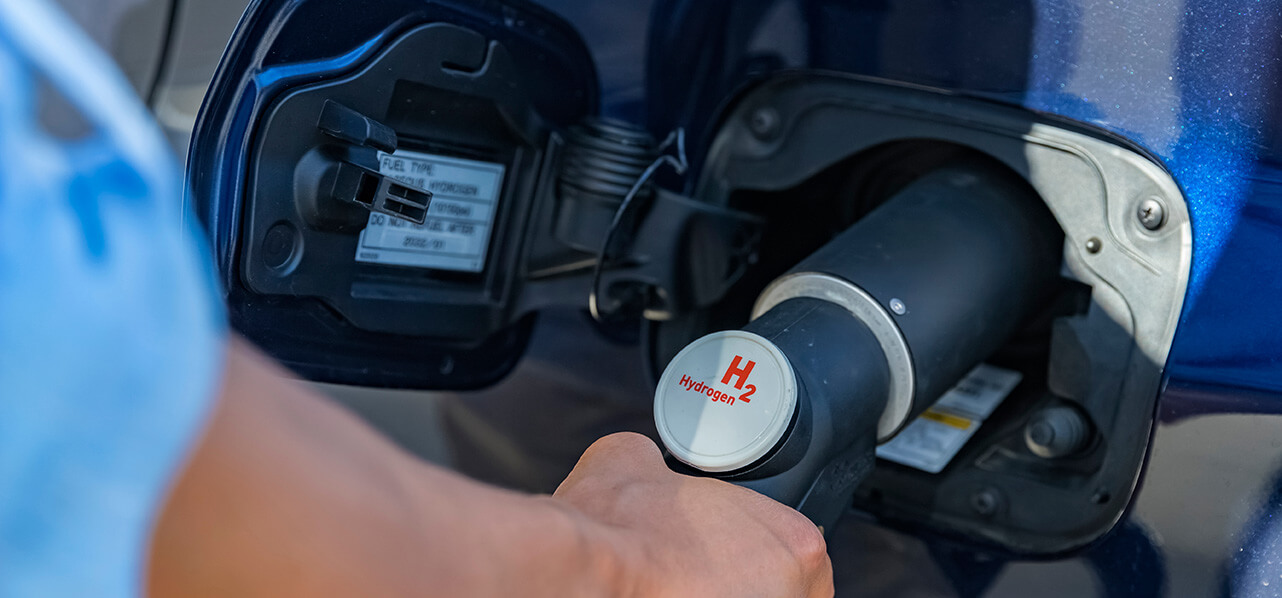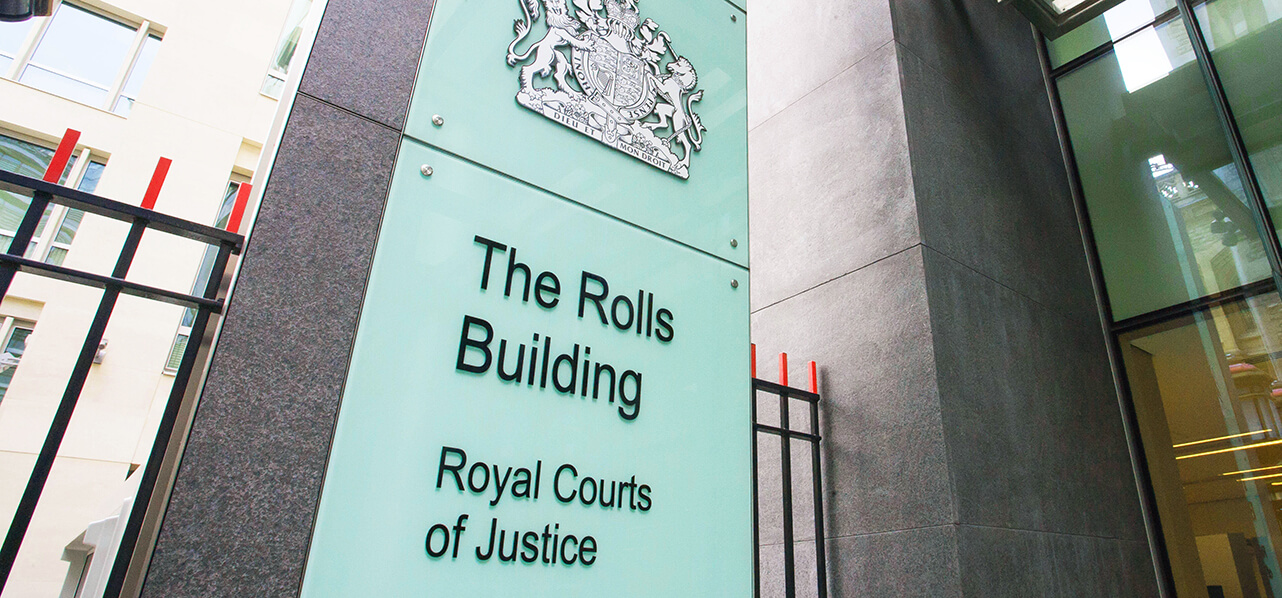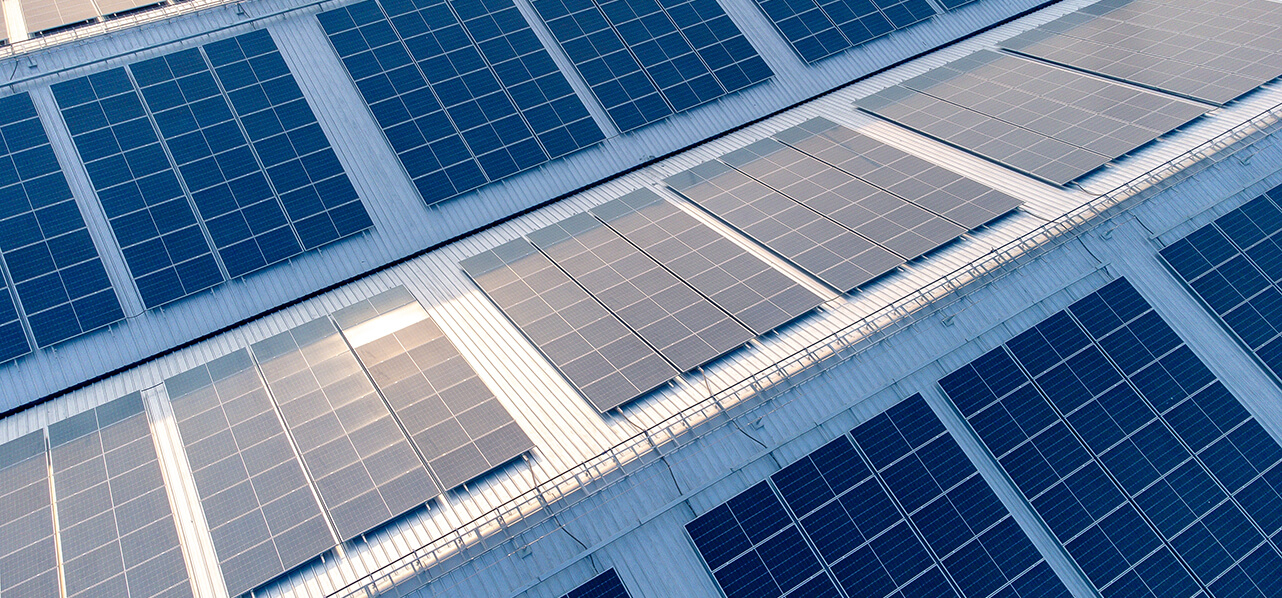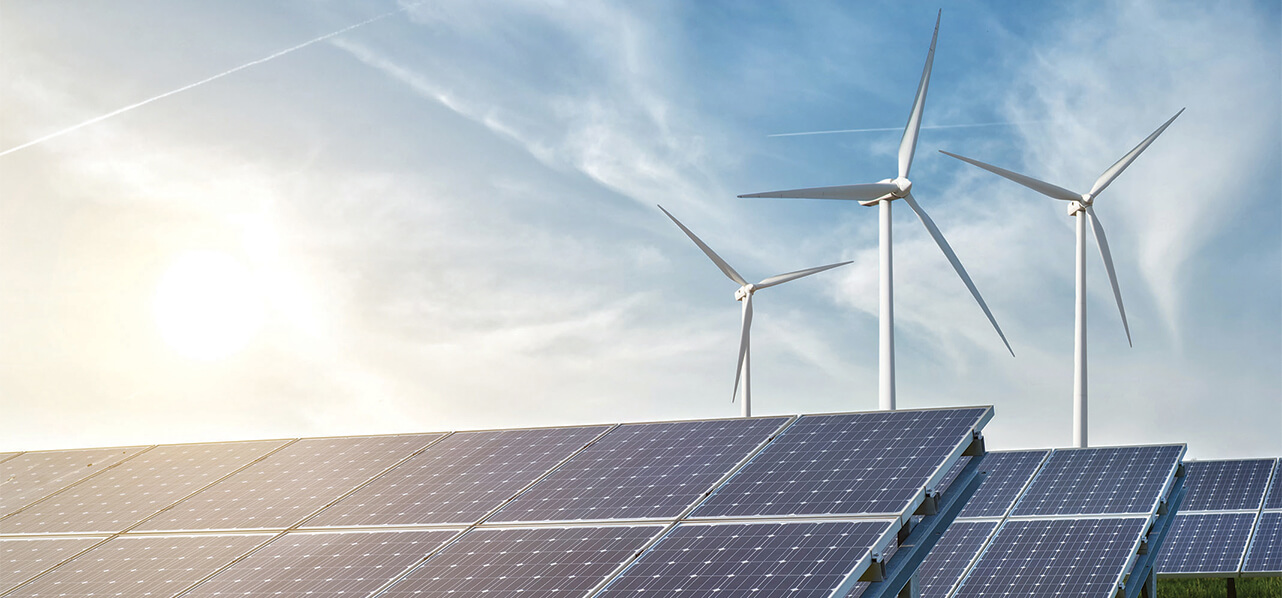Partner Hamburg
"The aim of the EU Hydrogen Strategy is to decarbonise hydrogen production and expand its use in sectors where it can replace fossil fuels."
The aim of the EU Hydrogen Strategy is to decarbonise hydrogen production and expand its use in sectors where it can replace fossil fuels².
The EU Hydrogen Strategy focusses on hydrogen produced from renewable energy sources (so called “green hydrogen”). The EU Hydrogen Strategy provides the following definition of green hydrogen: “hydrogen produced through the electrolysis of water (in an electrolyser, powered by electricity), and with the electricity stemming from renewable sources. The full life-cycle greenhouse gas emissions of the production of renewable hydrogen are close to zero. Renewable hydrogen may also be produced through the reforming of biogas (instead of natural gas) or biochemical conversion of biomass, if in compliance with sustainability requirements³.”
Although the main focus lies on green hydrogen, the EU Hydrogen Strategy recognises the role of other low-carbon hydrogen in the transition phase in the short to medium term (please see below).
The path set by the EU Hydrogen Strategy is divided into three phases. Each phase sets a specific objective to be achieved within the relevant phase. The EU summarises the objectives for each phase as follows⁴:
Phase 1 (2020-24): the objective is to decarbonise existing hydrogen production for current uses such as the chemical sector and promote it for new applications. This phase relies on the installation of at least 6 GW of renewable hydrogen electrolysers in the EU by 2024 and producing up to one million tonnes of renewable hydrogen. For comparison, only approximately 1 GW of electrolysers have been installed in the EU at the time of writing this article;
Phase 2 (2024-30): hydrogen needs to become an intrinsic part of an integrated energy system with a strategic objective to install at least 40 GW of renewable hydrogen electrolysers by 2030 and the production of up to 10m tonnes of renewable hydrogen in the EU. Hydrogen use will then gradually expand into new sectors, including steel-making, trucks, rail and some maritime transport applications. It will still mainly be produced close to the user or the renewable energy sources, in local ecosystems; and
Phase 2 (from 2030 onwards and towards 2050): renewable hydrogen technologies should reach maturity and be deployed at large scale to reach all hard-to-decarbonise sectors where other alternatives might not be feasible or have higher costs.
"The EU Hydrogen Strategy highlights that support schemes are likely to be required for some time to enable renewable hydrogen to become cost-effective on the scale envisaged."
KEY CONTENT: SCALE UP OF HYDROGEN CAPACITY
The most relevant goal of the EU Hydrogen Strategy is the build-up of additional hydrogen production capacity (i.e. building electrolysers). The EU Hydrogen Strategy provides targets of installing (i) in phase 1, at least 6 GW of renewable hydrogen electrolysers in the EU by 2024 and (ii) in phase 2, 40 GW of renewable hydrogen electrolysers in the EU⁵, along with an additional 40 GW electrolyser capacity target in the eastern and southern ‘neighbourhoods’ of Europe, e.g. Ukraine, as the priority partners for cross-border trade in hydrogen⁶.
Considering the fact that current electrolyser production capacity in Europe is under 1 GW per year, these goals have caused raised eyebrows throughout the EU. The Oxford Institute for Energy Studies (OEIS) comments: “Achieving 40 GW by 2030 (even without the further 40 GW to supply the EU from neighbouring countries) will require a very rapid scale up in electrolyser production capacity and/or strong reliance on imported electrolysers, most likely from China⁷”.
Naturally, such a massive and rapid scale up will require considerable investment. Consequently, the EU Hydrogen Strategy foresees the establishment of a European Clean Hydrogen Alliance, with the key aim of identifying and building up a clear pipeline of viable investment projects by bringing together public and private stakeholders⁸. Many EU financial instruments are also noted, in particular the EU ETS Innovation Fund, which will pool together around €10bn to support low-carbon technologies over the period 2020-2030⁹ and, as part of the Commission’s recovery plan, the Strategic European Investment Window of InvestEU¹⁰.
While the EU Hydrogen Strategy is mostly and predominantly looking at green hydrogen, it also considers and acknowledges the usefulness of other forms of low carbon hydrogen (e.g. blue hydrogen). The report envisages a cumulative investment of €3bn–€18bn for low-carbon fossil-derived hydrogen compared with €180bn–€470bn for renewable hydrogen (produced using mainly solar and wind)¹¹.
KEY CONTENT: SUPPORT SCHEMES
In addition to the European Clean Hydrogen Alliance, the EU Hydrogen Strategy highlights that support schemes are likely to be required for some time to enable renewable hydrogen to become cost-effective on the scale envisaged¹².
In this regard the EU Hydrogen Strategy envisaged an amendment of the EU Emission Trading System (ETS). In the next revision of the ETS, the Commission may consider how to incentivise the production or renewable and low-carbon hydrogen while considering the risk of carbon leakage. If differences in climate targets around the world continue, the Commission will propose a Carbon Border Adjustment Mechanism in 2021¹³.
According to the EU Hydrogen Strategy, Carbon Contracts for Differences (CCfD) could be another valuable support mechanism. The Strategy Document envisages CCfDs where the public counterpart would remunerate the investor by paying the difference between the carbon strike price and the actual strike price in the ETS.

The EU Hydrogen Strategy does not introduce a new support scheme in the form of a feed-in tariff, which was criticised.
The OEIS comments on the introduction of a CCfD support scheme by stating that “the strategy does contemplate the use of Carbon Contracts for Differences (CCfDs), presumably awarded by auction to guarantee a carbon price to a project developer irrespective of the actual price of carbon prevailing under the ETS. CCfDs appear to be a very logical, market-based mechanism to promote decarbonisation in an economically efficient way. Given the significantly lower cost of blue hydrogen production today, it is to be expected that any auction for CCfDs would be won by blue hydrogen projects initially, with green hydrogen having to rely on more direct support schemes until costs have reduced sufficiently. Therefore, we envisage that successful implementation of the strategy will require several government-backed auctions, both (a) for CCfDs and (b) to promote green hydrogen projects specifically over the next 12 months”.
Finally, the EU Hydrogen Strategy foresees (i) a common low-carbon threshold/standard which would be defined relative to the existing ETS benchmark for hydrogen production and (ii) comprehensive terminology and certification for renewable and low-carbon hydrogen¹⁴; thus, introducing a certificate of origin for hydrogen and enabling trading of green hydrogen.
However, the EU Hydrogen Strategy does not introduce a new support scheme in the form of a feed-in tariff, which was criticised. The OEIS commented on the need for member states to arrange competitive tenders: “While the strategy document contemplates several possible support schemes, the detailed implementation plan is far from clear. If the 6 GW target by 2024 is to have any hope of being achieved, several EU governments will need to arrange competitive tenders for such projects in the next 12 months. Such tenders would need to provide direct support to a renewable hydrogen project, either by underwriting the costs or by providing a bankable revenue stream to create a business case for a private investor”. The latter is currently the most relevant issue for the EU Hydrogen Strategy.
"Wind and solar farm operators may find potential for bankable business models through concluding long-term PPAs with the operators of hydrogen facilities. This model may be of particular relevance for facilities which are nearing the end of their feed-in tariff period and are looking for a business model following its expiry."
WHAT DOES THIS MEAN FOR THE ENERGY AND TRANSPORT SECTORS?
In the long-term, the EU Hydrogen Strategy is likely to impact a number of industries, including the energy and transport sectors within which WFW has a core focus. We have summarised below what we see as the key considerations for these industries, including an overview of potential opportunities and challenges that will need to be addressed.
Energy
The increase in green hydrogen capacity will need to be matched by a similar scale up in renewable energy deployment, which are likely to be large wind and solar plants. The strategy notes that from now until 2030 “€220bn-€340bn would be required to scale up and directly connect 80 GW-120 GW of solar and wind energy production capacity to the electrolysers to provide the necessary electricity¹⁵”. Wind and solar farm operators may therefore find potential for bankable business models through concluding long-term PPAs with the operators of hydrogen facilities. This model may be of particular relevance for facilities which are nearing the end of their feed-in tariff period and are looking for a business model following its expiry.
In Phase 2, the EU Hydrogen Strategy also sees hydrogen playing an increasing role as a form of energy storage to negate the intermittency of increasingly renewable systems. OEIS notes that while the Strategy Document mentions both daily and seasonal storage it does not recognise that “hydrogen’s real advantage is over longer periods beyond the capability of batteries¹⁶”. This brings up new possibilities for project developers who could combine electrolysers and hydrogen storage facilities with large-scale renewable energy plants. First project ideas pointing in this direction are already discussed in the market, which involve offshore wind farms, hydrogen plants at sea and loading facilities for tank ships (comparable to LNG offshore terminals). However, since for the time being batteries will be much easier to handle and install (hydrogen is still a highly flammable substance) it will take a while until hydrogen can play out its full advantage in terms of long-term energy storage.
But the impact of the EU Hydrogen Strategy goes beyond the renewables sector. In order to achieve a European market for hydrogen, energy infrastructure will become more and more important. In this regard, the EU Hydrogen Strategy contemplates hydrogen networks based on the conversion of existing natural gas pipelines combined with (relatively limited) newly built hydrogen dedicated infrastructure. For example, it expects that the hydrogen network in Germany and the Netherlands may consist of up to 90% repurposed gas infrastructure¹⁷. However, the EU Hydrogen Strategy is vague on how this European hydrogen grid will be regulated. OEIS comments ‘the strategy appears to downplay some of the complexity of converting natural gas pipelines to hydrogen service, but it does recognise that significant investments will be required and that regulatory changes will be required to enable that” and also: “while not stated explicitly, the strategy appears to be supportive of the concept that in the longer term a pan-European hydrogen network will develop and co-exist with a methane network, which will increasingly carry bio- or synthetic methane¹⁸”.
"In the long run, hydrogen is regarded as having the potential to significantly reduce carbon emissions in the transport sector itself."
Transport
The EU Hydrogen strategy notes that in future hydrogen could be transported via non-network-based transport options, e.g. trucks or ships docked at adapted LNG terminals¹⁹. However, in the long run, hydrogen is regarded as having the potential to significantly reduce carbon emissions in the transport sector itself. In relation to maritime, the EU Hydrogen Strategy sees hydrogen as an alternative low emission fuel for inland waterways and short-sea shipping and, in the long term, longer distance and deep-sea shipping if fuel cell power is scaled up and renewable hydrogen is used to produce synthetic fuels (methanol/ammonia) with a higher density²⁰. (For more information on shipping’s transition see Scope 3 emissions: how the freight industry will transition to net zero).
Equally, the EU Hydrogen Strategy briefly touches on long-term solutions for the aviation sector such as (i) the production of liquid synthetic kerosene and other synthetic fuels²¹ which are ‘drop in fuels’ in existing aircraft technology and (ii) hydrogen powered fuel cells/hydrogen-based jet engines. However, these would require considerable research and innovation, as well as the adaptation of existing aircraft design²².
The EU Hydrogen Strategy finally recognises that hydrogen can play a role in some transport applications where electrification is more difficult e.g. local city buses, commercial fleets or specific parts of the rail network, and it encourages the deployment of hydrogen fuel cells in heavy-duty road vehicles. Hydrogen fuel-cell trains are also mentioned as an alternative for existing train routes which are difficult/not cost-effective to electrify, noting that certain fuel-cell hydrogen applications are already cost-competitive with diesel today²³.
SUMMARY
With the EU Hydrogen Strategy, the EU sets the framework for the development of the hydrogen sector into one of the backbones of the European energy industry. It will be interesting to see if and when the EU manages to transfer this strategy into directives and regulations. Nevertheless, a first step is made, hopefully others will follow soon.
This is the second article in our ‘Hydrogen – What is the hype about?’ series, which provides an overview of the hydrogen sector and the strategy for its development in multiple jurisdictions. To read other articles in the series please click here.
To Opt In to WFW mailings and register for alerts on our forthcoming articles as soon as they are published, please email us here.
[1] A hydrogen strategy for climate-neutral Europe, COM(2020) 301 final.
[2] “Questions and answers: a Hydrogen Strategy for a climate neutral Europe”, European Commission (https://ec.europa.eu/commission/presscorner/detail/en/QANDA_20_1257), pg. 1.
[3] Ibid, pg. 2.
[4] Ibid.
[5] EU Hydrogen Strategy (https://eur-lex.europa.eu/legal-content/EN/TXT/?uri=CELEX:52020DC0301), pgs. 6-7, the “Strategy Document”.
[6] Ibid, pgs. 19-20.
[7] “EU Hydrogen Strategy: a case for urgent action towards implementation”, OEIS, July 2020 (https://www.oxfordenergy.org/wpcms/wp-content/uploads/2020/07/EU-Hydrogen-Strategy.pdf), pg. 3.
[8] Strategy Document, pg. 4
[9] Ibid, pg. 18
[10] Ibid, pg. 9.
[11] Ibid, pg. 2
[12] Ibid, pg. 13.
[13] Ibid.
[14] Ibid, pg.12
[15] Ibid, pg. 7.
[16] Ibid, pg. 5.
[17]Ibid, pg. 15.
[18] OEIS, pg. 5.
[19] Ibid, pg. 14.
[20] Ibid, pg. 11
[21] This falls under ‘Hydrogen-derived synthetic fuels’ which is included in the definitions (pg. 5 of the Strategy Document).
[22] Ibid, pg. 11
[23] Ibid, pgs.10-11.
Key contacts
Partner Hamburg
Partner Munich





